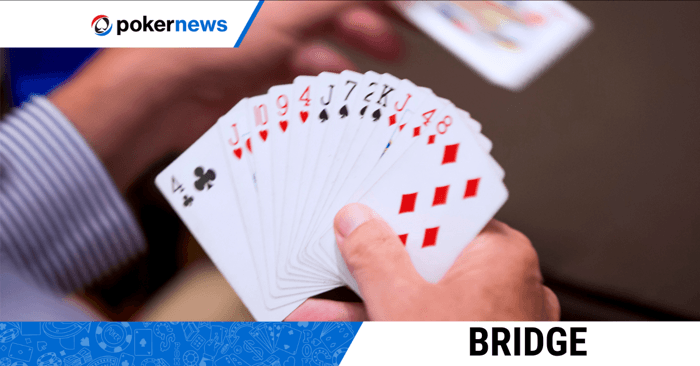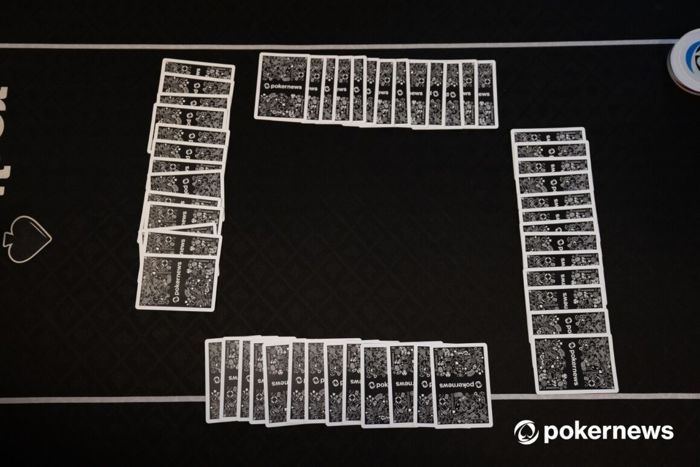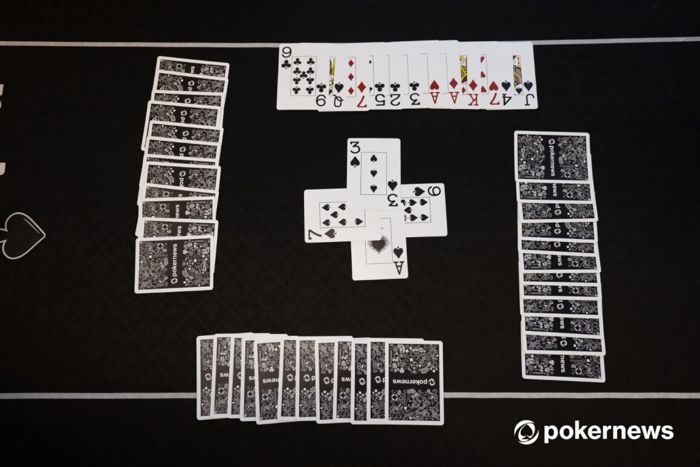Best Bridge Strategies and Tips for Every Player

Welcome to the world of bridge, a game where strategic finesse meets the camaraderie of shared triumphs.
As a beginner, understanding the importance of strategies and tips is the key to navigating the complexities of bridge and evolving into a confident player. This article is crafted with the objective of offering you invaluable insights and expert advice to sharpen your bridge skills.
Bridge is not merely a game of cards; it's a strategic dance where each move influences the outcome. From bidding tactics to adept cardplay, the nuances of bridge demand a thoughtful approach.
Whether you're aiming to outsmart opponents in a casual setting or elevate your game for competitive play, the strategies and tips provided here serve as your bridge companions.
Explore the intricacies of opening leads, finesses, and defensive maneuvers. Uncover the secrets of effective communication with your partner and master the art of bidding confidently.
With each tip, discover how to turn challenges into opportunities and transform your bridge experience. So, let's embark on this journey together, where every piece of advice contributes to your growth as a skilled and strategic bridge player.
Bridge Strategies for Success
Bridge is game that marries skill with strategy, where every card laid and bid made unfolds a unique story of partnership coordination and tactical finesse. As a beginner, diving into proven strategies is the key to unlocking success at the bridge table. Here are some of the more important things to consider.
Counting Cards
One fundamental strategy in bridge is the art of counting cards. As you witness cards played during the game, an astute player can deduce the distribution of remaining cards in each suit. Keeping track of high-value cards allows you to make informed decisions, anticipate opponents' holdings, and position yourself advantageously during the play.
Effective Bidding
Bidding is the heartbeat of bridge, and effective bidding strategies are pivotal to success. Begin by understanding your hand's strength, employing conventions to convey information to your partner, and recognizing when to be aggressive or conservative. Techniques like the Rule of 15 or Rule of 20 aid in evaluating opening bids, contributing to a solid foundation for strategic gameplay.
Partnership Coordination
In bridge, synergy with your partner is indispensable. Clear communication through bidding and signaling fosters a harmonious partnership. Develop conventions that suit your playing style, ensuring both you and your partner are on the same page. Recognizing your partner's signals and understanding their style contributes to cohesive decision-making, turning the partnership into a formidable team.
Balancing Risk and Reward
Success in bridge often hinges on finding the delicate balance between risk and reward. While bidding aggressively can yield high rewards, it also poses potential pitfalls. Discerning when to bid boldly and when to exercise caution is an art that comes with experience. Calculated risks, paired with a keen understanding of the opponents' bidding patterns, contribute to strategic success.
Adaptability and Flexibility
Bridge is a dynamic game, and successful players embrace adaptability. Recognize the evolving landscape of the hand and be prepared to adjust your strategy accordingly. Whether it's modifying your bidding plans or altering your cardplay approach based on new information, flexibility is a hallmark of a skilled bridge player.
Bridge Tips: Expert Advice
Elevating your bridge game from beginner to adept involves mastering key aspects of declarer play, defensive tactics, and effective communication with your partner. Here are expert tips to propel you towards success at the bridge table.

Declarer Play
As the declarer, plan your play carefully. Consider the opponents' potential distributions and hone your strategy accordingly. Visualize how each trick will unfold and anticipate possible challenges.
Work on developing and promoting long suits in your hand. This can help in generating extra tricks and increasing your chances of fulfilling the contract.
Also pay attention to the timing of your plays. Delay drawing trumps if needed, and carefully manage entries to the dummy. Timing can significantly impact your ability to take tricks efficiently.
Defensive Tactics
As a defender, your opening lead can set the tone for the entire hand. Consider the bidding, your partner's signals, and the strength of your hand when choosing the opening lead.
Disrupt declarer's plans by employing interference strategies. Lead trump to disrupt communication between the declarer and dummy, or make an early ruff to reduce declarer's potential trump tricks.
Counting cards and signaling effectively to your partner are crucial defensive tactics. Provide clear signals through your discards to convey information about your holdings, aiding your partner in making informed decisions.
Effective Communication with Your Partner
Establish Conventions: Develop and adhere to conventions that suit your partnership style. Consistency in using conventions enhances communication and reduces the likelihood of misunderstandings.
Encourage Open Communication: Foster an open channel of communication with your partner. Discuss your strategies, share insights, and be receptive to feedback. A partnership that communicates effectively is better equipped to face challenges.
Understand Your Partner's Style: Recognize your partner's playing style, tendencies, and preferred conventions. This understanding allows you to anticipate their moves, enhancing overall coordination.
Continuous Learning
Bridge is a game of continuous learning. Stay informed about new conventions, strategies, and trends in the bridge community. Attend workshops, read literature, and engage in discussions to broaden your knowledge.
After each game, review and analyze your hands. Identify areas for improvement and learn from your mistakes. Seeking feedback from more experienced players can provide valuable insights.
Elevating your bridge game requires a combination of strategic acumen, effective communication, and a commitment to continuous learning. Whether you find yourself as declarer or defender, implementing these expert tips will contribute to your growth as a skilled and confident bridge player. Embrace the journey, relish the challenges, and let each hand be a stepping stone towards mastery at the bridge table.
Understanding Bridge Tactics
Let's explore three key tactical aspects of bridge gameplay: hand evaluation, preemptive bidding, and leading strategies.
Hand Evaluation
A crucial tactical skill in bridge is the ability to evaluate the strength and potential of your hand. Utilize the point-count system to assess high card points (HCP) and distribution.
Consider factors such as the quality of your suits, the presence of long suits or voids, and the overall shape of your hand.
A balanced hand with a well-distributed point count may lean towards a no trump bid, while a hand with long suits and good trump support might favor suit contracts. The art of hand evaluation empowers you to make informed bidding decisions, setting the stage for strategic play.

Preemptive Bidding
Preemptive bidding is a tactical maneuver aimed at disrupting your opponents' bidding communication. This involves making aggressive bids at a higher level than conventional bids, signaling the intention to sacrifice precision for disruption.
A well-timed preemptive bid can limit the opponents' ability to accurately gauge their combined strength and potential contracts. However, caution is necessary, as overusing preemptive bids may lead to unfavorable outcomes.
Tactical preemptive bidding requires a keen understanding of when to seize the initiative and when to exercise restraint.
Leading Strategies
As the opening leader in a trick, choosing the right card is a tactical decision that can significantly impact the course of the hand. Consider the bidding, your hand's strength, and your knowledge of your partner's holdings.
Leading from a sequence of high cards can establish control in a suit, while leading trump can disrupt the opponents' communication.
Tactical leading strategies also involve leading through strength or leading to weaken a particular opponent's suit. A well-thought-out opening lead sets the tone for the entire hand, providing a tactical advantage to your side.
Strategies for Different Levels
Embarking on the journey of bridge, players of all skill levels find themselves navigating the fascinating realm of strategy. For novice players, focus on grasping the fundamentals �C understanding basic rules, hand evaluation, and the art of following suit. Develop a foundation of consistent communication with your partner through clear bidding signals.
Intermediate players, poised at the bridge crossroads, delve into more nuanced strategies. Explore preemptive bidding to disrupt opponents and refine your hand evaluation skills. Begin incorporating conventions such as Stayman and Blackwood to enhance communication and decision-making with your partner. As an intermediate player, absorb the lessons from every hand, learning from both victories and setbacks.
For advanced players, the strategic landscape broadens, and a refined approach becomes paramount. Master preemptive bids with precision, recognizing when to seize control and when to exercise restraint. Dive into advanced conventions like Gerber and Michaels Cue Bid to elevate your partnership's understanding. Embrace the complexity of leading strategies, adapting your approach based on opponents' tendencies and evolving hand dynamics.
Regardless of skill level, the key to progression lies in continuous learning. Novice players build a solid foundation, intermediates refine their strategies, and advanced players embrace the intricacies. Engage in post-game analysis, attend workshops, and seek mentorship to accelerate your growth. The bridge journey is a tapestry of experience and knowledge, and as you progress, let each hand be a stepping stone towards mastery. Embrace the challenges, celebrate victories, and revel in the joy of evolving into a strategic and confident bridge player.
Bridge Strategy FAQs
What are bridge tactics?
Bridge tactics refer to the strategic maneuvers and decisions players make during the game to achieve their objectives. These include hand evaluation, preemptive bidding, leading strategies, and defensive tactics. Mastering tactics enhances a player's ability to outmaneuver opponents and shape the course of the game.
What is the rule of 7 in bridge?
The Rule of 7 in bridge is a guideline used by defenders when deciding how many cards to lead from a suit. Subtract the number of cards in the defender's hand from 7. The resulting number is the maximum number of cards the declarer can hold in that suit without the need for further encouragement from the defenders.
What is the best way to improve at bridge?
The best way to improve at bridge is through a combination of practice, learning from experienced players, and continuous study. Engage in regular play, seek mentorship, attend workshops, and explore literature on bridge strategy. Review your hands, learn from mistakes, and embrace the challenges to grow as a player.
What is the 20 rule in bridge?
The Rule of 20 is used during the opening bid to assess whether a hand is suitable for bidding. Add the number of high card points (HCP) to the number of cards in the two longest suits. If the total is 20 or more, the hand is considered suitable for an opening bid.*
What card to play first in bridge?
Choosing the right card to play first in bridge depends on various factors. As a general guideline, lead a card from a long suit, preferably a suit you and your partner have bid. Consider the bidding, your hand strength, and information from your partner's signals. Leading from strength or weakness can be a tactical decision based on the context of the hand.
